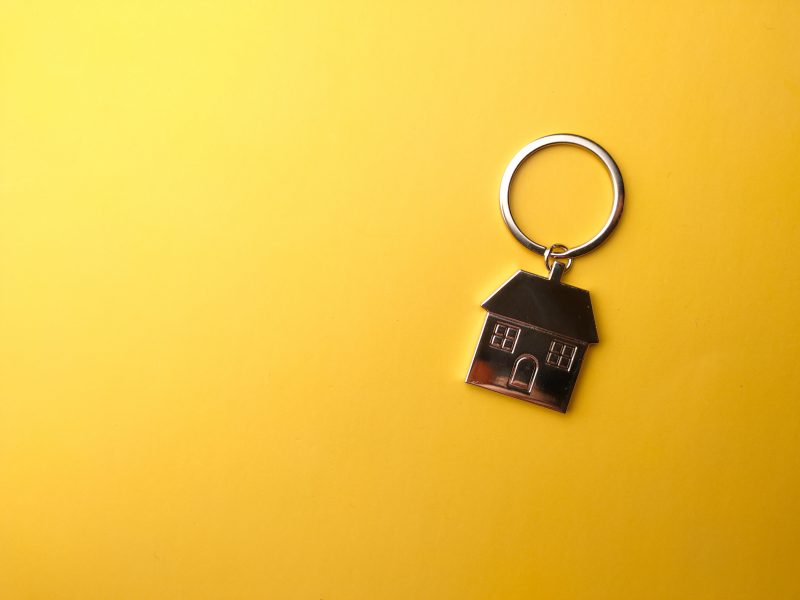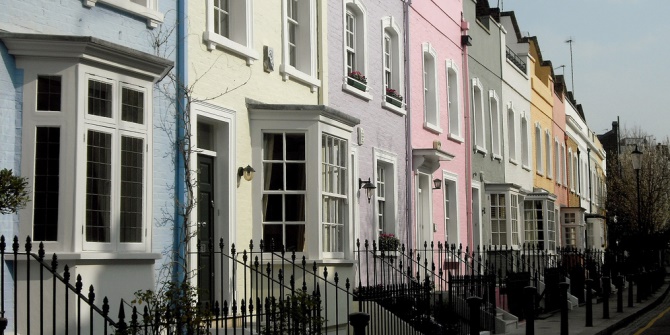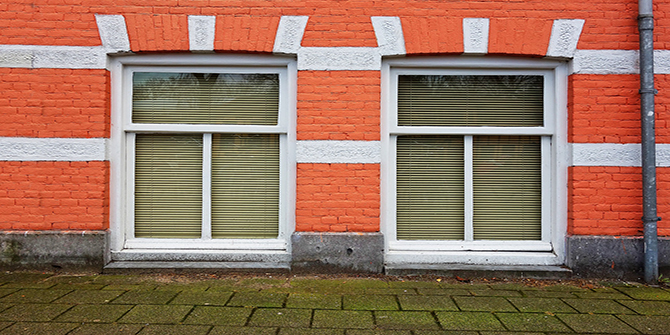 Despite the recent extensive flooding and acknowledgment of the increasing consequences of climate change at the Paris talks last month, there is little public discussion about building eco-homes. Here, Jenny Pickerill outlines the argument for getting these builds onto the agenda; these would be homes which would not just be cheaper to live in but built to withstand flooding and other extreme weather events.
Despite the recent extensive flooding and acknowledgment of the increasing consequences of climate change at the Paris talks last month, there is little public discussion about building eco-homes. Here, Jenny Pickerill outlines the argument for getting these builds onto the agenda; these would be homes which would not just be cheaper to live in but built to withstand flooding and other extreme weather events.
The Housing and Planning Bill being debated in Parliament this month does nothing to improve the quality of our housing stock and instead focuses almost entirely on increasing home ownership (and in the process reducing the availability of affordable housing). In the last year the Conservative government has stripped away much of the environmental legislation supporting eco-building. Yet we continue to ignore eco-housing at our peril.
Affordability of housing and the environmental design of homes are intractably linked. Too often the cost of housing is only considered during its construction or as market value, yet building ordinary houses on floodplains will ultimately be costly for residents and the government when they have to invest in new protection measures. We need more discussion about the consequences of building on floodplains; we should not build conventional houses on floodplains or other drainage systems. These houses will flood, and building in floodplains will increase flooding in other areas, which is not just economically costly but has social and emotional costs too. Climate change is leading to more extreme weather events which flood defenses are unlikely to cope with, regardless of how high we build them. It is more cost effective to build houses able to withstand flooding.
Flood plain in Buckinghamshire (Credit: Ron Adams CC BY-NC-SA)
Commercial house builders and the government continue to ignore the numerous design lessons of eco-housing, innovations that would build floodplain-durable homes. There is an entrenched resistance to changing how our houses are built, borne of a fear of market risk, of learning new knowledge and skills, a reliance on technological ‘fixes’ and a perception that ecological equates to being less comfortable.
Yet there are numerous examples worldwide of how eco-housing need not be more expensive to build, is cheaper to occupy, is more comfortable (especially in warmth) and is better able to withstand extreme weather. If we have to build on floodplains we can design houses to either withstand flood or be more easily recoverable. The Environment Agency already has advice on how to design homes to minimise damage — low permeable building materials, high electric points, flood resilient materials (such as wet-proofing). But we could also think about more radically changing how we build our homes.
Eco-houses have already been designed and built to withstand floods without damage. Designs include building a sacrificial basement, building houses on stilts or homes that float as water rises. All of these designs are already in use in different places around the world. In addition eco-homes would reduce the risk of contributing to flooding because they are designed to work the climatic features of a particular place. They often collect and store rainwater, have gardens that collect and absorb water, and minimize and treat fluid waste that is produced by the household. All of this reduces any runoff.
Eco-homes might appear to cost more to construct initially, but over the lifecycle of the building eco-design will cost dramatically less to live in, and building better homes would also avoid the costly price of flood clean up which currently costs approximately £30,000 per property. A house cannot prevent flooding and any eco-home building needs to be accompanied by better management of water everywhere, from how it is absorbed and flows from the uplands to how it is collected, stored and disposed at the household level. Even simple measures like reducing the amount of concrete and paving in our towns and cities will reduce the amount of water entering the sewer network and therefore decrease sewer flooding.
Eco-homes need not cost more, especially over their lifecycle, than conventional houses and yet can prove considerably cheaper to live in. Eco-homes can collect their own water, generate their own electricity and require only minimal heating. As homelessness increases and house prices rise beyond the reach of the majority, we should be rethinking what types of houses we need and building homes that are both affordable and ecological.
___
Please note: this article originally appeared Sheffield Social Science research blog, and is reproduced here with permission.
 Jenny Pickerill is professor in Environmental Geography in the Department of Geography, University of Sheffield. Her latest book — Eco-Homes: People, Place and Politics — has just been published by Zed Books.
Jenny Pickerill is professor in Environmental Geography in the Department of Geography, University of Sheffield. Her latest book — Eco-Homes: People, Place and Politics — has just been published by Zed Books.









Though you may not escape the fact that you will incur unforeseen costs along the way, it is important to educate yourself beforehand on the building costs you can expect to pay. Build a little extra cushion into your budget, and stick to that budget as closely as possible.
Building to high eco-standards (eg Passivhaus) combined with rainwater management (eg deep green roofs and on-site water recycling) are key elements of new-build cohousing in the UK. Cohousng is currently a minute part of the UK housing solution, but one that should become more significant, like it is in Scandinavia (to cite just one example).
Developers are only as sensitive to the whole-life cost of buildings to the extent that regulations and customers demand it. In relation to the latter, the extra expense and incovenience caused by the necessary changes to the design does not seem to be adequately reflected in the price people are prepared to pay, perhaps because their financial time-preferences imply a higher discount rate than you assume or perhaps because they don’t aim to stay lomg enough to reap the savings themselves.. My personal expeience is that a particular bugbear is ‘dead’ space on the ground floor and the lower ration of usable to circulation space in 3 storey houses. For these reasons many housebuilders will shy away from building too many units on flood plains – there simply isn’t the demand for the compromised houses that result.